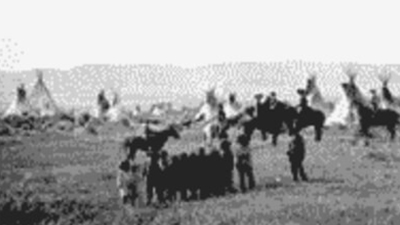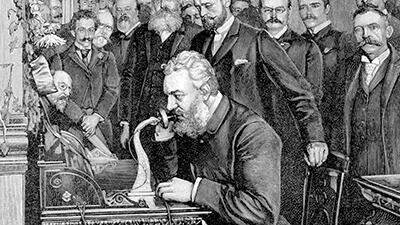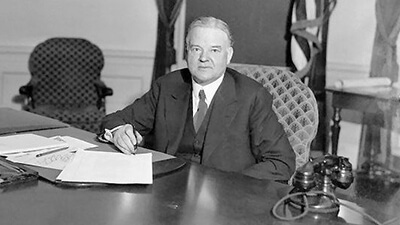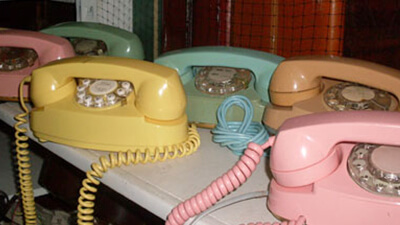An interactive timeline covering telecommunications history from before the discovery of electricity to the present day.
Telecommunications History Resources
Telecom History Timeline - Telecommunications History Group
The telephone had as big of an impact on the 20th century as the Industrial Revolution had on the 19th century, and its associated industries have produced some of the most incredible technological advances in humankind. The rise of the telephone changed the way we live, work and play, and contributed to the invention of television, computers, pagers, fax machines, e-mail, the Internet, online stock trading and more. Explore our timeline below highlighting just a few of these extraordinary leaps of innovation and invention.
Interested in the future of telecommunications? In the next decade we can expect wireless Internet connections in your car or briefcase, phone numbers you keep for life and voice-activated dialing at the touch of a button at home, work, or on the go.
 Before Electricity
Before Electricity  1800-1900
1800-1900  1900-1950
1900-1950  1950-1970
1950-1970  1970-2000
1970-2000  2000 and Beyond
2000 and Beyond Before Electricity
1200 BC: Fire signals used at the siege of Troy
776 BC: First document use of pigeons, announcing the Olympian winner to the people of Athens
200 BC: Egypt and China use messengers on foot and on horseback, using relay stations
150 BC: Greek historian Polybus converts the Greek alphabet to numeric, enabling coded texts to be signaled
37 AD: Heliographs – Roman Emperor Tiberius uses mirrors to communicate with his empire
1608: Telescope invented, enabling ships at sea to use signal flags
1793: Mechanical semaphores on hilltop towers used by Claude Chappe in France
1800-1900
1835: Joseph Henry invents first electric telegraph
1844: Using his new code, Samuel Morse sends the first telegraph message, “What hath God wrought?” between D.C. and Baltimore
1858: Construction of the first transatlantic telegraph cable completed
1876: Alexander Graham Bell patents the telephone
1881: First Yellow Pages published
1887: First coin-operated telephone installed in the Hartford Bank by the pay phone’s inventor, William Gray
1889: Almon Strowger invents the first direct dial, bypassing the need for manual switching
1895: Italian inventor Guglielmo Marconi develops the first successful long-distance wireless telegraph, using radio waves
1900-1950
1915: The first “official” coast-to-coast call is made between A.G. Bell in New York to Thomas Watson in San Francisco
1927 Transatlantic telephone service inaugurated for commercial service (US to Britain), using radio telephony
1929: Herbert Hoover becomes the first president of the United States with a phone on his desk. Until this time, the president talked on a phone from a booth outside his executive office
1946: 250,000 women employed as switchboard operators for public service and businesses
1950-1970
1955: The laying of the first trans-Atlantic telephone cable
1957: Field tests for the first pagers begin in Allentown and Bethlehem, Pennsylvania
1958: Princess Phones are introduced, the first phone with a lighted dial, which became a part of American pop culture
1960: The first touch-tone telephones are test-marketed, which had 10 buttons, rather than the 12 buttons of today
1963: Hotline established between White House and Kremlin following the Cuban missile crisis
1968: 911 chosen as the nationwide emergency number. The nation’s telephone companies agree to make this three-digit sequence unavailable as an exchange number
1970-2000
1971: Ray Tomlinson sends the first email to himself via ARPANET
1973: First non-car mobile phone, the DynaTAC is unveiled to the public
1989: The first flip phone is released, targeting wealthy consumers at a price of $3,000 USD
1989: The World Wide Web is born, marking the beginning of the Internet as we know it today. Most Americans get Internet connections through their phone lines
1991: Caller ID introduced. Controversial at the time, Caller ID has become America’s most popular add-on feature
2000 and Beyond
2000: The “Web Phone” combines a traditional telephone with an LCD touch-screen and a retractable keyboard to let customers surf the Internet, check e-mail, make phone calls and check voice mail from a single device
2000: The “Thin Phone” integrates wireless Internet access with local wireless phone service, allowing Internat customers to stay connected with everything from Web pages to voice and e-mail, all while on the move
2000 and beyond: “Information Appliances” make Internet mobile, wirless “Web to Go,” voice-activated dialing, phone numbers for life, phone calls and Internet on your TV, TV via wireless phones, and much more
